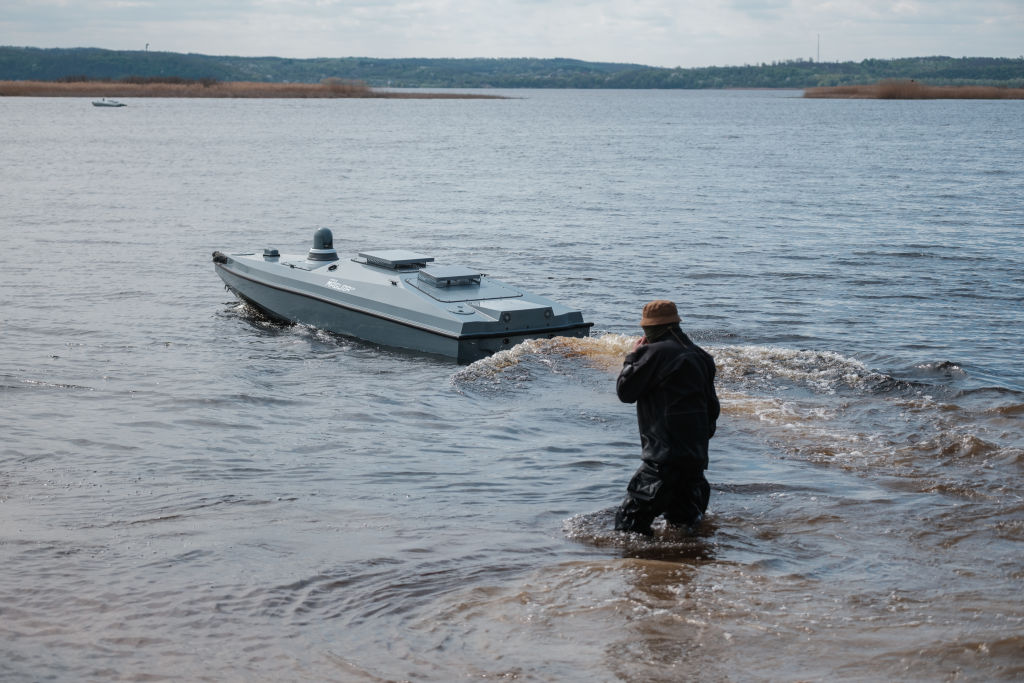Unmanned surface vehicles are becoming increasingly popular in the fight against sea crimes, including illegal fishing.
Such vehicles, also known as USVs or maritime drones, can be used to detect suspicious activities without endangering personnel and can be equipped with artificial intelligence autonomy systems to gather, process and transmit information. Their enhanced communication systems enable seamless data sharing with command centers and improve situational awareness through persistent surveillance and reconnaissance missions.
According to Engineering News, cutting-edge USVs include sensor suites with cameras, sonar, radar and acoustic systems to give operators a complete picture of the environment. They may include military-grade sensors and modular payloads.
“Many USVs also feature swarm capabilities, enabling multiple units to work collaboratively,” wrote Mike Ball, an editor at Defense Advancement. “By leveraging inter-vehicle communication, these platforms can execute coordinated maneuvers, such as area surveillance or search-and-rescue missions. This networked approach enhances operational efficiency and provides a scalable solution for covering expansive maritime regions.”
USVs can be fully autonomous or remotely controlled, depending on their navigation systems and a mission’s requirements. They are often used for patrols, detecting mines, anti-submarine warfare and anti-piracy operations. Compared to traditional naval vessels, USVs are typically smaller, more fuel-efficient and require fewer personnel, resulting in lower costs.
In Africa, where patrol capacity is limited, USVs could be used to observe, detect and deter illegal, unreported and unregulated fishing in areas where a nation’s manned military vessels are unavailable for extended periods. Data collected by USVs could support global transparency efforts, supply regional allies with critical maritime information, and inform authorities about areas of concentrated fishing efforts. USVs could also help identify fishing vessel activity and support search-and-rescue operations.
“For Africa, adopting this technology could revolutionize maritime security by providing cost-effective solutions tailored to the continent’s unique challenges,” Guy Martin wrote for defenceWeb. “As African nations seek to secure their waters against evolving threats, USVs offer a promising path forward.”
As Ball noted, USVs also contribute to harbor and port security through routine patrols and inspections. They can identify unauthorized vessels, monitor infrastructure and respond rapidly to threats.
“USVs also play a central role in multi-domain operations,” Ball wrote. “By acting as a node within larger networked systems, they integrate seamlessly with manned vessels, submarines, and aerial platforms. This interoperability allows for synchronized missions where data flows across multiple assets, ensuring a unified operational picture.”
The Nigerian Navy recognized the benefits of using USVs to more effectively monitor its waters, which for at least two decades have been plagued by illegal fishing, particularly by Chinese industrial trawlers. The scourge costs the country about $70 million annually.
Last year, the Nigerian Navy acquired two SwiftSea Stalker USVs from Swiftship, a shipbuilder in the United States. These USVs were to be used in the Gulf of Guinea, the Niger Delta and Lake Chad Region, areas where insecurity and criminal activities persist. In South Africa, shipbuilder Legacy Marine is building a 9.5-meter USV that uses AI and robotics to navigate. It is believed to be the first USV fully built and tested in South Africa.
“USV technology is rapidly evolving, and the platforms are increasingly utilized within naval and defense forces,” Ball wrote. “Advancements in swarm intelligence, autonomous collaboration, and AI integration will enable USVs to undertake more complex missions with greater independence.”

